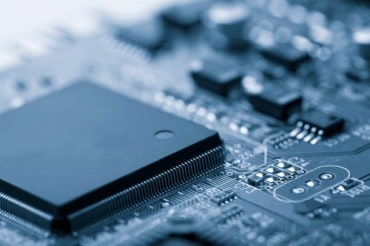
Related advances in a number of technologies may enable the needed improvement in security of edge and IIoT systems.
It’s time to decentralize security across this broad swath of edge devices, the authors of an emerging security framework urge. “As the sheer volume of data required for managing devices increases, it becomes clear there is a point where centralized management ceases to be effective and efficient,” according to The Industry IoT Consortium (IIC)’s latest update to its Industry Internet of Things Security Framework (IISF). “Instead, embedding security into each piece of equipment individually, and empowering the equipment with the security context required to make safe decisions, has become a far more scalable approach.”
The IIC’s framework builds on industry consensus on securing IIoT systems at a time when cyber-attacks on industrial control systems are on the rise. Industry internet systems that need hardening against such attacks include factory automation and medical systems. “The rapid adoption and proliferation of AI in the industry internet, especially AI at the edge, can increase the organization’s vulnerability to security threats,” the report’s authors warn. “Risks increase as more operational data is stored and consumed by AI algorithms running on edge devices. If they are compromised or replaced with models that have loopholes, the systems that depend on AI capabilities can become significant security threat vectors.”
The impact could be devastating, the report’s authors continue. “Adequate security must be able be implemented to maintain the integrity of the devices against attack, with a multitude of autonomous smart devices all making decisions on their own. Therefore, a malicious entity cannot compromise the devices and cause them to make the wrong decisions at critical times. The key elements in this security scenario are ensuring integrity of the endpoints, enabling communications security, and providing the ability to update the endpoints more securely.”
The IIC authors point to related advances in technology that may enable improving the security of edge and IIoT systems, including the following:
- Software-defined networks (SDNs): This virtual layer “can separate networks and prevent packets from crossing between them, thus increasing security by isolating the applications,” the report’s authors state. “It also allows IP addresses to be dynamically changed, making it harder for attackers to learn about the network and benefit from previous explorations.”
- Software-defined platforms and virtual machines: Such platforms help separate computer systems and reduce the risks of an attack on a system that may disrupt its multiple functionalities.
- Private keys: “Protecting the confidentiality of private keys in endpoint devices and simplifying the
provisioning can improve IIoT. Technologies such as physical unclonable function (PUF)
allow endpoint devices to behave as if they have private keys without storing a key,
reducing the risk associated with attacks on hardware to retrieve a stored key. The
adoption of this technology has been slow, possibly due to concerns with stability over
time.” - Split key technology: Such an approach “could be used to enable multi-party control (i.e., N of M) of IIoT system components such as IoT actuators.”
- Artificial intelligence: “A growing application usage of AI technology in IIoT is threat detection,, specifically to use AI to augment the security of IIoT systems, including systems that are not AI enabled,” the report’s authors claim. “AI technology can be leveraged to augment the security defenses of IIoT systems rapidly and efficiently, analyzing billions of IoT sensor-generated data signals, structured and unstructured data that are stored across data lakes, enterprise systems and data warehouses.”
- Distributed ledgers: Another strategy comes through use of blockchain or distributed ledger technology. These offer “a tamper-proof log of transactions, a log of interactions with IIoT components or a record of supply chain agreements among participants,” the report notes. Distributed ledger technology enables “transactions managed through consensus among a distributed set of peer systems. This enables the creation of a secured, tamper-resistant, indelible shared ledger of activity or transactions.”




























